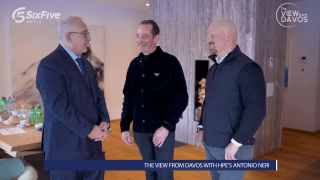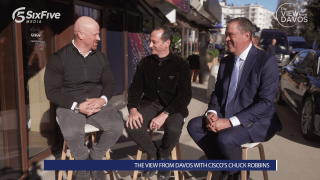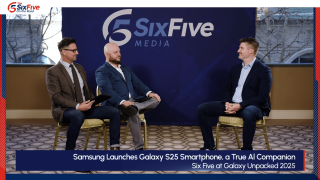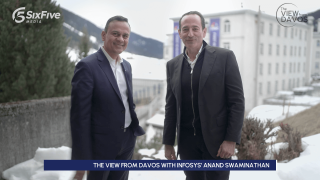In this episode of Connected, Diana Blass explores Dell Tech World, uncovering the cutting-edge infrastructure powering AI in enterprises. From robots to farms, witness next-gen servers and edge devices in action. The challenge? Scaling these technologies to maximize computational power efficiently while keeping costs and energy consumption in check. Discover more in our latest episode!
Watch the video below, and be sure to subscribe to our YouTube channel, so you never miss an episode.
Or listen to the full audio here:
Disclaimer: The Six Five Webcast is for information and entertainment purposes only. Over the course of this webcast, we may talk about companies that are publicly traded and we may even reference that fact and their equity share price, but please do not take anything that we say as a recommendation about what you should do with your investment dollars. We are not investment advisors and we ask that you do not treat us as such.
Transcript:
Diana Blass: Another industrial revolution reshaping our world. We’ve manufactured electricity, software, and now we have the ability to…
Jensen Huang: Manufacture intelligence.
Diana Blass: It’s the age of AI.
Speaker 3: Sit.
Diana Blass: A time of increased efficiency.
Speaker 4: If you’re able to have a conversation with your own infrastructure based on your information.
Diana Blass: Automation feeding the world.
Keith Bradley: We find a sustainable way to grow the peppers.
Diana Blass: And boundless creativity…Whitney here is an artist. She is designing a picture right now and then she’s going to be using AI to enhance it.
Speaker 6: Oh, that’s so cute.
Michael Dell: All of that progress that came before was really just a pre-game show.
Diana Blass: And now?
Michael Dell: Every company has to become an intelligence company.
David Nicholson: It’s all about data. Using that data to deliver better products.
Diana Blass: How companies can do that is a question. Their AI ambitions continuing to be challenged by integration complexities with existing systems, data quality, and high costs. The right infrastructure could address that, as we learned at Dell Tech World. It’s AI with a focus on mass adoption. A whole new world. Let’s step inside.
David Nicholson: I’m fascinated by anything that has to do with the power question. Power comes in, you generate compute and you generate heat, and that heat has to be dissipated and you have to use more power to dissipate the heat. It’s this never ending loop.
Diana Blass: So the question is…
David Nicholson: Where do we get the power?
Diana Blass: It requires a sustainable approach to AI starting with the data center. All right, well we’re now inside Dell Technologies Solutions Expo. Getting a look at the PowerEdge portfolio here…
Michael Dell: At the heart of your AI factory is the Dell PowerEdge XE9680.
Diana Blass: Dell is partnered with Nvidia to offer the Dell AI factory. Services and solutions, packaged together, to serve as a foundation for an enterprise’s adoption of AI.
David Johnson: In the design of these particular systems, we can support a number of different components to actually power your AI factory including, a selection from our partners, Nvidia, AMD, and Intel.
Diana Blass: There’re servers that can be customized to meet the power needs of specific industry applications.
David Johnson: We’re talking about very large language models that these particular systems are specifically designed to actually support.
Diana Blass: Well, it looks like we arrived to the liquid cooling area of the demo. Tell us more about what we’re seeing here.
David Johnson: So, in this particular instance, we’ve introduced a liquid assist cooling, that you see here in the middle, and direct liquid cooling, down there at the end, with the power and performance and the needs for cooling. Over time, air just probably won’t get it done.
Diana Blass: Recently, Dell has emerged as a top vendor for AI oriented servers. Just take a look at its most recent earnings report. AI server orders increased at $2.6 billion up from 800 million the previous quarter. Elon Musk is one of the latest to sign on. Dell is assembling half of the racks that are going into the supercomputer that XAI is building. At Dell Tech World, we got to see some of the use cases that these servers are powering. From a robot spotting chemical spills…
Steen Graham: Nova Carter Robot, a partnership between Segway and Nvidia, has actually seen this real world example. It’s been trained on synthetic data…
Diana Blass: To this.
Steen Graham: And we built an industry first, multimodal RAG.
Diana Blass: RAG stands for retrieval augmented generation.
Steen Graham: And the cool thing about RAG is you can take the proprietary data, you can take your custom insides, and you can build a model for itself. So, this demo is actually running back in the lab in Round Rock, Texas. And this is on the XE9680, eight way server, so Dell’s flagship server. And in it we have eight of the new MI300X GPUs. So many people want to get their hands on this thing right now and not many people have access to it. I’ve been privileged.
Diana Blass: This example here shows how the application is sorting through AMD’s earnings call.
Steen Graham: Now, it’s going to pull up that multimodal insights and you can hear the audio right now. We’re pairing all of those incredible insights you get from large language models with the actual real data getting the high fidelity enterprise grade application. So, that’s the promise of RAG.
Diana Blass: So, those are examples of large language models that demand data centers. But, as CEO Michael Dell pointed out…
Michael Dell: Not all the models are large and not all AI workloads run in a data center.
Diana Blass: They run at the edge, on devices like the AI PC.
Michael Dell: It’s inexpensive, it’s energy efficient, it’s fast, and it’s running on devices
Diana Blass: Enabling assistance like Andy. “Hey Andy, am I at Dell Tech World right now?”
Andy: It sounds like you might be asking if you’re at Dell Technologies World.
Diana Blass: Andy stole the show at Dell Tech World with her human-like interactions.
Michael Shepherd: As humans, we prefer to talk to other humans. It’s why we prefer to put the chatbot away, and pick up the phone, and talk to a human or go in person and talk to somebody. And so, what we realized is that, from kind of a more of an anthropological view is, we need these interfaces to be more friendly, be more human-like, and help really democratize artificial intelligence for anybody on earth. If you’re checking a doctor’s office visit…
Andy: Hi there, my name is Andy. Can you please tell me your name and date of birth?
Michael Shepherd: All of this can run directly on one PC. And that’s part of our demo here today, is actually, the Precision 5680. It’s running all on that PC. So, we’ve quantized the model down, the animation is running on the GPU, the entire end-to-end stack is running on one system. But, if you’re going to scale out and, like for instance, if we wanted this for the World Cup and you had millions of people interfacing with this, you’re going to have server forms that are generating that animation and the LLMs in order to respond to people on the web or on the mobile devices.
Diana Blass: It’s redefining the boundaries of innovation. And, as we learned in this episode, it takes actually a lot more than just infrastructure to get started. Enterprises will need services, training and…
Dave Nicholson: Alliances, partner systems, ecosystems.
Diana Blass: And considering that three big time leaders took the sage at Dell Tech World…
Michael Dell: So, we can put 72 of your B200 Blackwells in one rack.
Jensen Huang: Only at Dell World do you talk sexy like that.
Diana Blass: I’d say we’re on the right track for something…
Bill McDermott: Really big.
Diana Blass: So stay tuned and stay connected. So you could see the industrial revolution happening before our eyes.






















































































